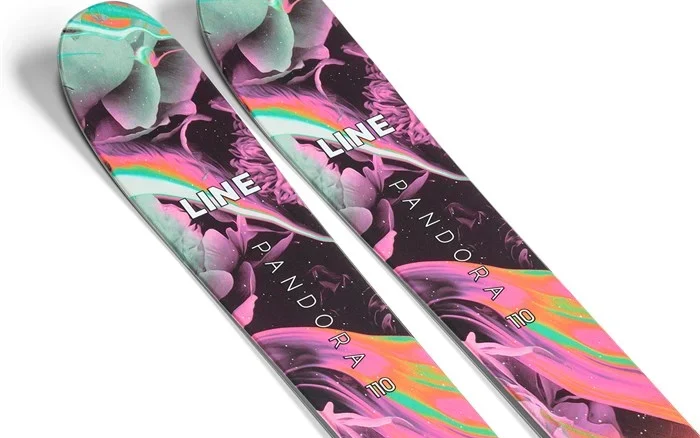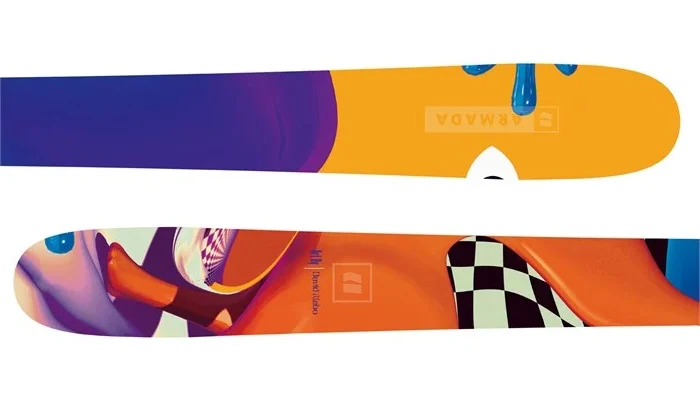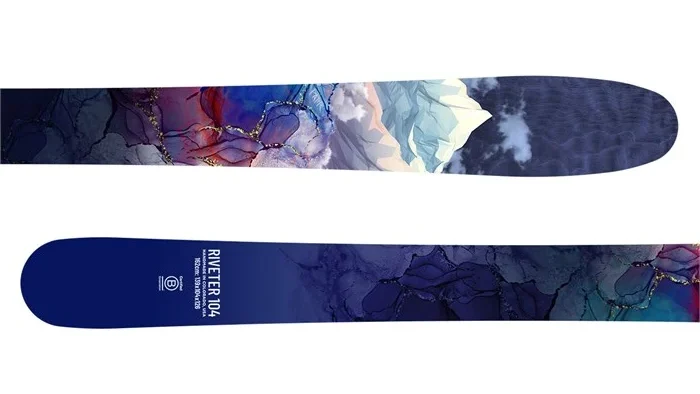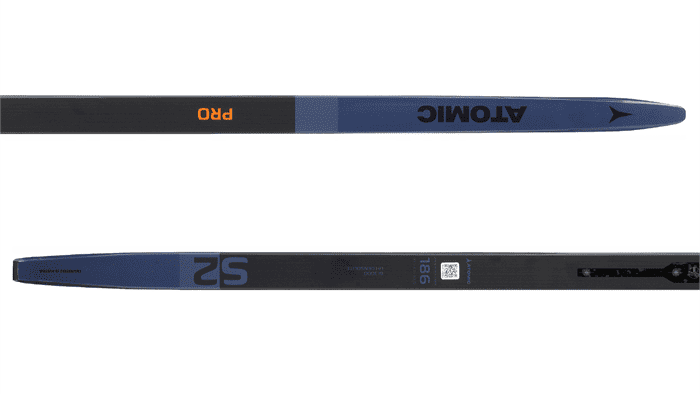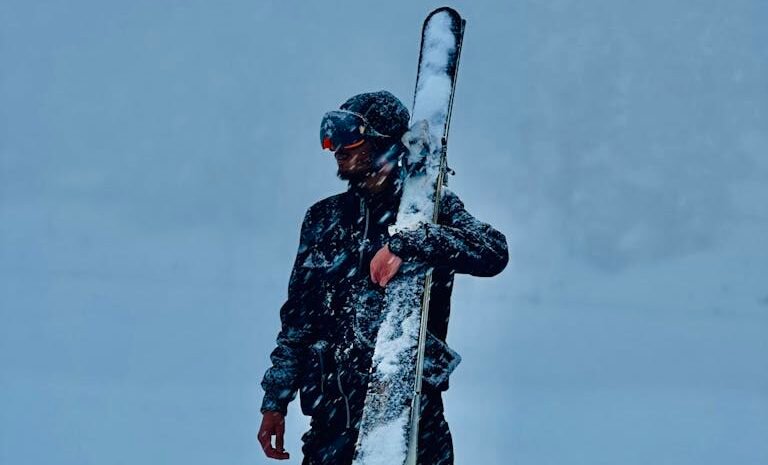Introduction To 10 Different Types Of Skis

Skiing is a popular winter sport that offers an exhilarating experience for outdoor enthusiasts. With the ski industry’s relentless innovations, enthusiasts now confront a wide array of options, each crafted for specific conditions, preferences, and abilities.
This guide gives you an overview and aims to clarify the diverse types of skis available, equipping you with the knowledge to make an informed selection. In my upcoming articles, I’ll delve deeper into each ski type, providing more comprehensive insights.
So whether you are a novice or an expert skier, understanding the different types of skis available is important in choosing the right equipment that suits your needs and skill level.
Key Takeaways
Alpine Skis
Alpine skis, the quintessential companions for resort skiing, are engineered for performance on groomed trails. Their design philosophy balances speed, precision, and control, catering to a spectrum of skiing styles from casual cruising to aggressive racing.
- Race Skis: These are the speed demons of the ski world, built for skiers who live for the adrenaline rush of racing down slopes. With a narrower waist for rapid edge-to-edge transitions and a stiff flex for maximum power transfer, race skis are all about precision and speed. Ideal for competitive skiers and those who crave the thrill of going fast on hard-packed snow.
- Carving Skis: Carving skis are designed for skiers who enjoy the art of making smooth, sweeping turns. They offer a wider platform than race skis, providing stability at speed and moderate flex for a comfortable ride. These skis are perfect for intermediate to advanced skiers looking to elevate their carving skills on groomed runs.
- All-Mountain Skis: As the name suggests, all-mountain skis are versatile workhorses of the ski industry. Capable of handling a variety of snow conditions and terrain, they have a waist width that strikes a balance between flotation in powder and agility on groomed surfaces. Whether you’re navigating through trees or making turns on a groomed run, these skis are designed for skiers who want one pair to do it all.
Powder Skis
Powder skis are your best allies on days when the snow falls deep and light. Their hallmark is a wide waist, significantly broader than that of all-mountain or race skis, which enables them to float atop powder rather than sink.
- Design Characteristics: The most distinct features of powder skis are their width and rocker profile. The ample width underfoot provides the necessary lift in deep snow, akin to snowshoes, while a pronounced rocker (the upward curve of the tip and tail) facilitates easy maneuverability and prevents the tips from diving under the snow.
- Performance in Deep Snow: These skis transform deep powder skiing from a laborious task into a delightful experience. The soft flex and rocker profile work together to absorb variations in the snow, offering a surf-like ride that many skiers dream of on powder days.
Backcountry Skis
Backcountry skiing offers an escape from the crowded slopes, leading adventurers into untouched snow and rugged terrain. Skis in this category are designed with the ascent as much in mind as the descent, blending lightweight construction with downhill capability.
- Weight Considerations: The mantra for backcountry skis is “light is right.” Reduced weight makes for easier ascents, but without sacrificing the performance needed for enjoyable descents. Innovations in materials and design have enabled manufacturers to produce skis that meet these dual requirements.
- Width and Bindings: The ideal waist width for backcountry skis depends on the typical snow conditions you encounter. Narrower skis are preferred for long tours in firm conditions, while wider skis are beneficial in deeper snow. Additionally, backcountry skis are compatible with specialized bindings that allow for a free heel during the ascent and can be locked down for descents, offering the best of both worlds.
Freestyle Skis
Freestyle skiing is all about self-expression, whether it’s in the terrain park, halfpipe, or anywhere creativity takes hold. Freestyle skis are designed to support this creativity, with features that enhance performance in these playful skiing styles.
- Park Skis: Tailored for jumps, rails, and jibs, park skis are often twin-tipped, allowing skiers to land and ski in either direction. Their construction balances durability to withstand impacts and a flex pattern that offers both pop and forgiveness.
- Pipe Skis: Specifically designed for halfpipe skiing, these skis have a narrower waist and stiffer flex to provide the speed and edge control needed to soar up the pipe walls and perform tricks.
Big Mountain Skis
For those drawn to the challenge of steep, untracked mountainsides where the snow runs deep and the terrain demands respect, big mountain skis are the tool of choice. These skis are built to withstand the rigorous conditions encountered off the beaten path.
- Build and Durability: Big mountain skis are characterized by their sturdy construction, which stands up to the variable and often harsh conditions found in remote mountain environments. They are wider than most alpine skis, providing the flotation needed in deep snow, yet they possess a stiffness that ensures stability at high speeds and on steep descents.
- Performance in Varied Terrain: These skis excel where the snow is deep and the pitches are steep. Their design supports skiers who push the limits, offering the flotation needed in powder and the precision required for navigating narrow chutes and making critical turns in challenging terrain.
Nordic Skis
Nordic skiing, with its traditions rooted deeply in the snow-covered landscapes of the north, offers a different kind of thrill – one of endurance, finesse, and connection with the landscape. This category encompasses a range of skis designed for traversing vast snowy expanses, from groomed tracks to untouched backcountry.
- Cross-Country Skis: These skis are optimized for speed and efficiency over long distances. They come in two main styles: classic, which is narrow and used in set tracks, and skate, which is slightly wider and used for a skating motion on groomed trails. Both styles prioritize lightweight construction and a balance between glide and grip.
- Backcountry Nordic Skis: For those who venture beyond groomed trails, backcountry Nordic skis offer the capability to explore the wilderness. They are wider than their cross-country counterparts, providing better flotation in deep snow, and often feature metal edges for improved grip on icy surfaces.
Specialty Skis
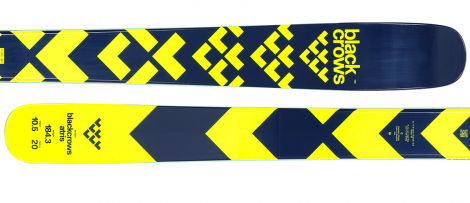
Beyond the main categories, there are skis designed for very specific purposes, catering to skiers with particular interests or requirements.
- Telemark Skis: Marrying elements of alpine and Nordic skiing, telemark skis enable a free-heel skiing style that allows for a distinctive knee-bending turn. These skis are versatile enough to be used on groomed runs, in powder, and for touring, offering a unique skiing experience that combines dynamic turns with the ability to traverse varied terrain.
- Ski Boards and Mini Skis: Offering a playful alternative to traditional skis, ski boards, and mini skis are short and wide, designed for fun and agility. They allow for easy turning and tricks, making them a popular choice for skiers looking to mix up their time on the slopes with something different.
Key Features of Different Types of Skis
Length and Width
The length and width of a ski play a significant role in its performance. Generally, longer skis provide better stability at higher speeds, while shorter skis offer greater maneuverability. The width of the ski determines its floatation on deep snow. Narrower skis are more suitable for hard-packed slopes, while wider skis excel in powder conditions. Additionally, the sidecut of a ski, which is the difference between the width of the tip, waist, and tail, affects how easily the ski can turn. Skis with a deeper sidecut are easier to carve on groomed runs, while skis with less sidecut are more stable at high speeds.
Flex and Profile
Flex refers to the stiffness of the ski, which affects its responsiveness and carving ability. Stiffer skis offer better grip and stability, making them ideal for advanced skiers. Softer skis, on the other hand, are more forgiving and easier to maneuver, making them suitable for beginners or those who prefer a more relaxed skiing experience. The profile of the ski refers to its shape, with cambered skis having an upward arch in the center and rockered skis having an upward arch at the tip and tail. Some skis also feature a combination of camber and rocker, known as hybrid profiles, which aim to provide the benefits of both designs.
Material and Construction
The materials and construction of skis impact their durability, performance, and weight. Most skis are made from a combination of wood, metal, and composite materials. Wood cores provide stability and dampening, while metal layers enhance edge grip and stability at high speeds. Composite materials, such as carbon fiber, are used to reduce weight without compromising performance. Different ski manufacturers adopt various construction techniques to achieve specific performance characteristics. In addition, the sidewall construction of a ski can influence its edge grip and torsional stiffness. Skis with full sidewalls provide better edge hold on hard snow, while cap-construction skis are lighter and more maneuverable.
Choosing the Right Ski Type
Assessing Your Skill Level
Before choosing a ski type, it’s essential to assess your skill level honestly. Beginners and intermediate skiers may benefit from using alpine skis, as they provide stability and ease of use. Expert skiers may seek more specific ski types based on their preferred discipline, such as freestyle or backcountry skis. Always choose a ski that matches your current abilities to ensure a safe and enjoyable experience on the slopes.
When selecting alpine skis, consider the various subcategories available, such as all-mountain, carving, or powder skis. All-mountain skis are versatile and suitable for a wide range of terrain, making them a great choice for skiers who enjoy exploring different parts of the mountain. Carving skis are designed for making precise turns on groomed slopes, ideal for those who love the feeling of slicing through the snow with precision. Powder skis, on the other hand, have a wider design to help you stay afloat in deep snow, perfect for off-piste adventures.
Considering Your Preferred Terrain
The type of terrain you enjoy skiing on also plays a vital role in selecting the right ski. If you prefer groomed trails and fast-paced downhill skiing, alpine skis are the way to go. Nordic skis are perfect for those who enjoy cross-country skiing on flat or undulating terrain. If you have a sense of adventure and love exploring untouched snow and backcountry areas, backcountry skis will provide the necessary performance and features.
For backcountry skiing enthusiasts, it’s crucial to invest in proper safety equipment, such as avalanche beacons, probes, and shovels. Additionally, consider taking avalanche safety courses to learn how to assess and mitigate risks when skiing in uncontrolled mountain environments. Being well-prepared and knowledgeable about backcountry skiing can make all the difference in staying safe while enjoying the thrill of untouched snow.
Factoring in Your Physical Attributes
Physical attributes, such as weight and height, should also be considered when choosing skis. Heavier individuals may require wider skis to achieve optimal floatation in deep snow, while lighter skiers may prefer narrower skis for better control and maneuverability. Additionally, taller skiers may benefit from longer skis for added stability, while shorter skis are easier to handle for those with a smaller stature.
It’s important to also take into account your skiing style and preferences when selecting ski length. Longer skis provide more stability at high speeds and better floatation in powder, while shorter skis offer increased maneuverability and ease of turning. Finding the right balance between ski length, width, and design can significantly enhance your skiing experience and performance on the mountain.
Maintenance and Care
Regular Cleaning and Waxing
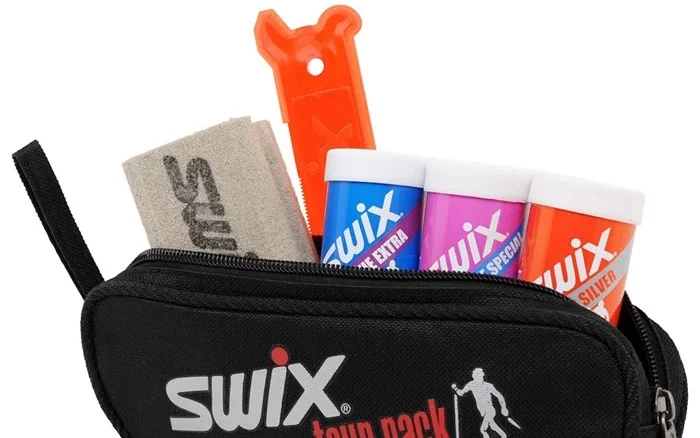
To ensure the longevity and optimal performance of your skis, regular cleaning and waxing are essential. After each skiing session, remove any dirt, snow, or ice from the skis with a soft brush. This not only keeps your skis looking pristine but also prevents any buildup that could affect their performance on the slopes. Periodically wax your skis to maintain their glide and protect the base. Waxing not only enhances your skiing experience by improving speed and maneuverability but also helps to prevent the base from drying out and becoming damaged. It is advisable to consult a professional ski technician for the appropriate waxing technique and products tailored to your specific ski type and skiing style.
Additionally, consider investing in a ski tuning kit to perform minor maintenance tasks at home, such as edge sharpening and base repairs. This proactive approach can extend the lifespan of your skis and ensure they perform at their best for many seasons to come.
Proper Storage Techniques
When not in use, it is crucial to store your skis properly to prevent any damage. Keep your skis in a cool and dry environment, away from direct sunlight, extreme temperatures, and humidity. Storing skis in a ski bag or rack not only helps protect the edges and bases from accidental impact or scratches but also keeps them organized and ready for your next adventure. Consider storing your skis in a horizontal position to prevent warping and maintain their structural integrity over time. Regularly inspect your skis for any signs of damage, such as delamination or core shots, and address any issues promptly to avoid further complications.
Furthermore, consider investing in ski-specific accessories, such as ski straps or wall mounts, to optimize storage space and showcase your skis when they’re not in use. By incorporating these storage solutions into your ski maintenance routine, you can ensure that your skis remain in top condition and are always ready for your next alpine escapade.
When to Seek Professional Maintenance
While regular maintenance can be done at home, there are instances when professional maintenance is necessary. If you notice significant damage to the base or edges, such as deep gouges or core shots, it is recommended to bring your skis to a qualified technician for repairs. They have the expertise and specialized equipment to assess the extent of the damage and perform precise repairs that restore your skis to their optimal condition. Additionally, professional technicians can provide valuable insights on ski maintenance best practices and recommend preventive measures to mitigate future damage.
Safety Considerations for Different Ski Types
Appropriate Gear and Equipment
Regardless of the ski type, safety should always be a top priority. Wear a properly fitted helmet to protect your head from injury. Ensure you have the appropriate ski boots that provide good ankle support and fit snugly. Use ski bindings that are set correctly for your height, weight, and skiing ability to reduce the risk of injuries.
Understanding Skiing Etiquette
When skiing in crowded slopes or areas shared with other skiers, it is essential to understand and abide by skiing etiquette. Always yield to slower skiers in front of you and never stop in the middle of a trail. Use appropriate hand signals to communicate with other skiers and always maintain control of your speed to avoid collisions.
Recognizing and Avoiding Hazards
Being aware of potential hazards and knowing how to avoid them is crucial for a safe skiing experience. Keep an eye out for signs of unstable snow, such as cracks or recent avalanches, and avoid or ski around those areas. Stick to marked trails and avoid skiing in closed areas. Familiarize yourself with the mountain’s rules and regulations to ensure you are skiing in designated and safe areas.
Additionally, it is important to be aware of weather conditions and how they can affect skiing safety. Pay attention to forecasts and be prepared for changes in weather, such as sudden drops in temperature or heavy snowfall. These conditions can impact visibility and make skiing more challenging, so always be prepared with appropriate clothing layers and equipment.
Furthermore, understanding the terrain you will be skiing on is crucial for your safety. Different ski types are designed for specific terrains, such as groomed slopes, powder, or backcountry. Knowing the characteristics of the ski type you choose will help you navigate the terrain more effectively and reduce the risk of accidents.
Conclusion
The right pair of skis serves as a bridge between the skier and the mountain, enhancing the connection to the snow and the landscape. With lots of ski types available today, skiers have the opportunity to find equipment that not only meets their needs but also elevates their skiing experience.
Whether you’re carving groomed runs, floating through deep powder, or exploring the backcountry, there’s a pair of skis designed to bring out the best in your skiing adventures. Embrace the process of discovering your ideal skis, and look forward to the enjoyment and performance they will bring to your time on the slopes.

